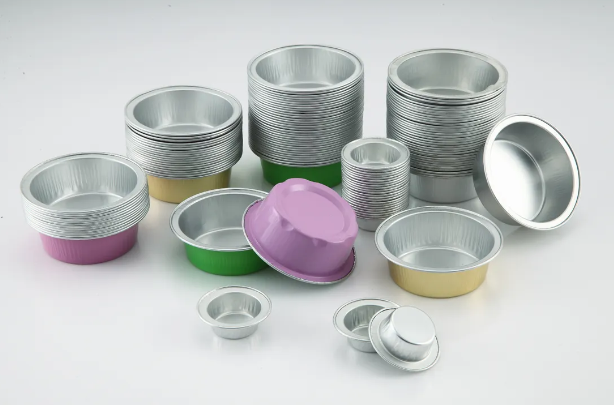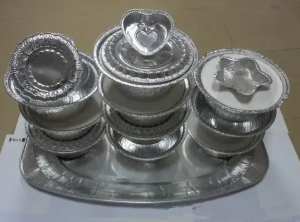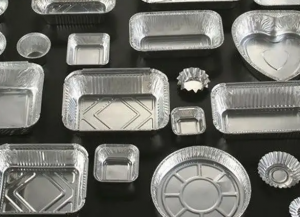A social practice team composed of 8 students from the School of Economics and Management of China Agricultural University took the initiative to undertake a public welfare research project related to green packaging and green consumption methods. The focus is to understand the awareness and acceptance of green and environmentally friendly aluminum foil lunch boxes and containers (including fast food boxes, packaging boxes, takeaway boxes, etc.) among residents and catering companies in Beijing. Preliminary survey results show that Beijing consumers are more aware of disposable aluminum foil lunch boxes and containers than expected, and have a high willingness to use them. This indicates that the Beijing market has great application potential. However, at present, catering enterprises rarely use aluminum foil containers for various reasons. Based on this, the students in the research group put forward some suggestions for accelerating the promotion of aluminum foil lunch boxes and containers.

Preliminary results of consumer surveys
(1) The disposable lunch boxes most commonly used by residents are made of plastic, and the utilization rate of aluminum foil containers is the lowest.
During the investigation, we found that the most disposable lunch boxes and containers used by residents are plastic materials, followed by paper and degradable materials. The use rate of aluminum foil lunch boxes is relatively low, with 10% of people saying that they will often use aluminum foil lunch boxes and containers, and the overall frequency of use is only about 6%. The use rate of aluminum foil lunch boxes is the highest in the 26-35 age group, and most of them have been used on planes and western restaurants. It is worth noting that 15.5% said that they often use foam lunch boxes.
(2) Most residents have correct perceptions of aluminum foil lunch boxes, but negative perceptions are actually misunderstandings
However, in terms of residents’ awareness of aluminum foil lunch boxes, more than 60% of the respondents have a positive understanding of aluminum foil products. For example, it is known that aluminum foil products are resistant to high temperature and do not produce harmful substances (53%); good barrier and sealing properties, and long food preservation period (38%); aluminum foil is recyclable, which is conducive to environmental protection (37.6%); safety and hygiene (28.6%) Wait. But few people understand that it is already cost-effective (8.4%).
Only nearly 20% of the respondents have a biased understanding of aluminum foil lunch boxes. They mainly believe that long-term use of aluminum foil lunch boxes will cause poisoning (18.8%), and aluminum foil products are high-end products with high prices (18.3%), which are excessive consumption and waste of resources ( 10.3%).
It is also a pity that although a considerable number of consumers have used aluminum foil, they always think it is tin foil, and they do not know that aluminum foil has long been integrated into many aspects of our daily life. Aluminum foil products urgently need to justify their name and be widely recognized by the public.

(3) Compared with price, consumers pay more attention to the quality and safety of lunch boxes and containers
The survey results show that in terms of influencing factors for consumers to choose lunch boxes, the vast majority of the respondents put quality and safety first (63%), followed by environmental protection features and impact on the environment (31%), After that is the price (13%), which means that the price can also make certain concessions under the condition of ensuring health. One-third of the respondents said that although they know that safety and environmental protection are important, in most cases it is difficult for consumers to choose, and they can only passively accept the arrangements of merchants. Only 7% said it doesn’t matter what kind of lunch box they use, and there are few consumers who cite low price as the only factor.
The vast majority of consumers (83%) hope that when choosing lunch boxes and containers, catering companies should put the quality of lunch boxes and food safety first, and choose environmentally friendly and recyclable materials (53%). 20% of the respondents suggested that catering companies should give consumers more choices in the choice of lunch box materials.
However, 7% of people still hope that catering companies can choose the lowest cost lunch box.
(4) Most consumers can accept lunch boxes and packaging boxes within 1 yuan
The results of the survey show that 62% of the respondents can accept that restaurants charge for disposable lunch boxes and packaging boxes, 25% of the respondents believe that the cost should be borne by the catering company, and 13% think it doesn’t matter. Regarding the charging standard, the most acceptable price of the respondents is 0.6-1 yuan/piece, accounting for 62% of the people who agree to charge, 20% agree with the fee below 0.5 yuan/piece, and 18% can accept more than 1 yuan/piece s price. This result shows that the charges for lunch boxes and packaging boxes in the Beijing market are recognized, and consumer needs or affordability are diverse. As far as we know from aluminum foil product companies, the high-quality aluminum foil lunch boxes and packaging boxes currently mass-produced and supplied can fully meet the needs of consumers in terms of price, and the company can still maintain profitability. If you consider the residual value income collected by catering enterprises and the cost of reducing labor, water, and energy consumption during distribution and use, the use of aluminum foil products is not only beneficial to consumers, but also to production enterprises and catering enterprises. better economy.
(5) More than half of consumers can accept the use of disposable aluminum foil lunch boxes and containers by catering enterprises
When asked whether they can accept aluminum foil lunch boxes (including fast food boxes, packing boxes, takeaway boxes, etc.) in dining and ordering, nearly 90% of the respondents can partially accept them in dining out and ordering (40 %) or even fully (49%). Only 3% said it was unacceptable, and 8% said they were not sure. A whopping 96% of those in the 26-35 age group said it was acceptable or partially acceptable. For middle-aged and elderly people in this age group, the acceptance rate is gradually lower, at 83% and 79%, respectively.

(6) Nearly half of consumers are willing to use aluminum foil lunch boxes and containers at home
45% of respondents said they would be willing to use aluminum foil containers or lunch boxes at home, and 57% in the 36-49 age group. They mainly believe that aluminum foil containers can be heated in an oven, which is convenient and fast, saving energy and water; secondly, there are also factors such as extending the shelf life of food and recyclability after use. It is not easy to understand that in the household acceptance survey of aluminum foil products, the acceptance rate of women (32%) is much lower than that of men (60%).
Among the respondents who are unwilling to use aluminum foil containers or lunch boxes in their homes, 63% believe that the use of aluminum foil lunch boxes in their homes is unnecessary and a waste of resources; 25% are worried that the use of aluminum foil containers in their homes will increase a lot. spending; and a small number of people expressed reluctance to change their existing consumption habits.
(7) Consumers’ awareness of green consumption has increased, and they hope to strengthen market supervision and promote aluminum foil products
When answering the question “What are your suggestions for promoting green and environmentally friendly lunch boxes/containers in Beijing?”, almost all the respondents expressed the unanimous view that publicity should be strengthened, promotion should be strengthened, and green consumption should be promoted. , benefit the country and the people. It is suggested that the government should issue corresponding standards and norms, and strengthen management to eliminate unqualified lunch boxes. Nearly half of the people suggested that consumers should learn more about the advantages of aluminum foil lunch boxes and containers, and pilot promotion.
